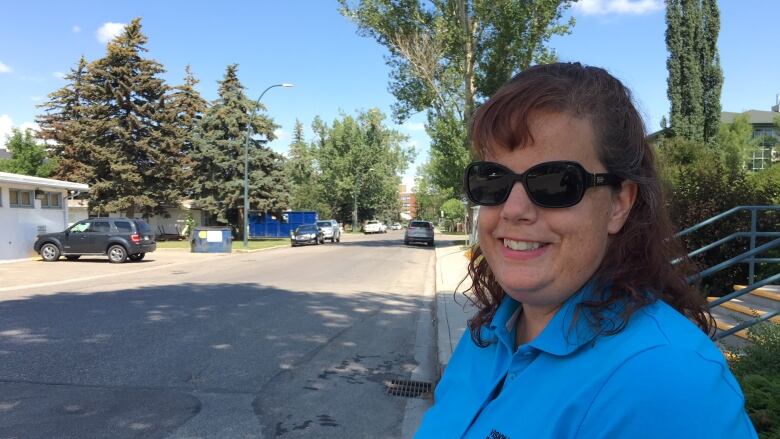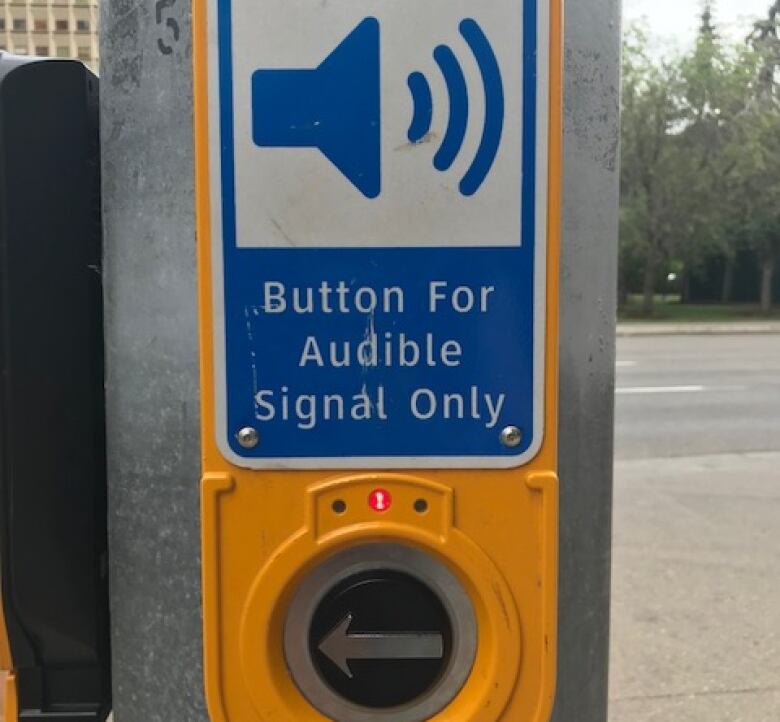Calgary a challenge to navigate for the visually impaired, say advocates
City has fewer than 200 pedestrian signals with audio cues

On the average Calgary street, Kathy Culhane has to listen to the cars to know when it's safe to cross. On busy streets, she'll listen for which side the traffic is moving.
On quiet streets, she'll listen for a car, and hope for the best.
Culhane, who works at the Canadian National Institute for the Blind, is visually impaired with extreme tunnel vision that leaves her seeing the world as if through a pinhole. That can make crossing the street a challenge without appropriate signals.
"[It's] very difficult to be honest," said Culhane. "If construction is going on,if it's light, dark, all that affects me."
- MORE CALGARY NEWS |Alberta issues $70M challenge to companies to develop cleaner tech
- MORE CALGARY NEWS |Calgary wildlife rescue group asks for steady funding source from city
Most of Calgary's intersections are without accessible pedestrian signals those are the ones that chirp and beep to let those with visual impairments know when they can safely cross the street.
Out of 1,072 traffic signals in the city only 180 of them are equipped with audible cues for the visually impaired. That's about 17 per cent. Toronto, by comparison, sits at 40 per cent.
Culhane has noticed the difference.
"For Calgary compared to other cities, I think we're behind the times," she said. "I think we are a metropolitan city, one of the biggest cities in this country, so why we are still struggling to get a basic safety signal to cross the street is kind of mind boggling."

Prior to 2012, the city only installed accessible pedestrian signals upon request from citizens, according to spokeswoman Tara Norton-Merrin. Since then, the city began installing devices "at all new signals and at locations where a major rebuild was occurring."Citizens can still request to have accessible signals installed.
Many of the accessible traffic signals are clustered in the downtown core, which hasn't gone unnoticed by Culhane.
"The only ones I've really heard are the ones downtown, which is great I don't want to walk into a train," she said.

Norton-Merrinsaysthe city had an influx of complaints when it put in the accessible signals between 2012 and 2014, and they had to pull back.
"It was decided that a new audible device should be considered that met the needs of the visually impaired community, but were less intrusive for residents or other stakeholders," said Norton-Merrin.
For Lui Greco, national manager of advocacy for CNIB, the complaints from residents just show that the equipment wasn't installed properly.
"When they're properly deployed, there should be no issue with noise pollution," said Greco, who is visually impaired and lives in Calgary. He said the technology is supposed to respond to ambient sound, so on a busy street in the middle of the day, the volume should go up. On a quiet residential street in the early hours of the morning, it should go down.

The city is planning to install 80 new accessible pedestrian traffic signals before the end of 2019, with 51 of thosein response to citizens' requests.
"I just think that the city needs to,no pun intended,open their eyes, and their ears," said Culhane."And really concentrate on helping those with disabilities cross the street."
- Readmorearticles byCBCCalgary, like us onFacebookfor updates and subscribe to ourCBCCalgarynewsletterfor the day's news at a glance.












_(720p).jpg)


 OFFICIAL HD MUSIC VIDEO.jpg)
.jpg)



























































































